Why Is Investing In Grade A Panels Important?
Why Is Investing In Grade A Panels Important?
Investing in a solar energy system is not only a responsible step as a citizen, but also a contribution towards adopting clean energy. But only adopting solar energy doesn’t help in cost-cutting. The quality of the panel determines both the return on investment and the long-term reliability of your installation.
While there are various types of grades, based on quality and manufacturing standards, broadly, there are only 2: Grade A and Grade B. The prices differ largely, and so does the quality. While the differences may seem tempting, it’s necessary to understand what they are, how to differentiate them, and what challenges you may face.
Understanding Solar Panel Grading
Solar panels are classified into grades – A, B, C, and D – based on their manufacturing quality, visual appearance, and performance consistency. But in this blog, we’ll discuss the difference between the top Grade A and the other grades.
Grade A panels:
- Perfect in appearance
- Fully compliant with IEC and BIS standards
- Backed by a long-term performance warranty
Grade B panels:
- Meet electrical performance standards
- May have minor cosmetic or structural imperfections
- Such as slight scratches, misaligned cells, or small glass blemishes
Grade C & D panels:
- Often have more severe defects that may affect efficiency and long-term durability.
- Unsuitable for high-quality residential or commercial installations
How to Spot Fake or Low-Grade Panels
With the increasing demand for solar installations, subpar and poor-grade panels are slowly flooding the market. These may be falsely labelled as a product of a well-known company or be passed off as “discounted” units. Below are some points that you should check before making a purchase or deal:
1. Cracked or Chipped Solar Cells
Any cracks or chips on the solar cells show mishandling and manufacturing faults. Any tiny crack will reduce efficiency and lead to faster degradation than the promised time.
2. Poor Solar Cell Alignment
In Grade A panels, the solar cells are aligned precisely for maximum energy capture. Misalignments often reduce sunlight absorption and impact the output energy.
3. Quality of Tempered Glass
The protective glass is supposed to be clear, strong, and free from bubbles. If the tempered glass is not of quality, it can compromise both the solar panel’s durability and performance. These defects will be affected and increase during extreme weather conditions.
4. Mismatched Labels and Barcodes
Authentic panels can be distinguished by their printed labels with accurate barcodes and manufacturer details. Mismatched labels may indicate fake products or unverified sources.
5. OEM Warranty Verification
Make sure to verify the warranty directly with the manufacturer (OEM). Every warranty is assigned a different code and number, so make sure the warranty told and the warranty mentioned are the same. B-grade panels offer shorter warranties and sometimes, no warranty.
Why Some Installers Use B-Grade Panels
Some lower-grade panels meet the datasheet performance standards, but they have shorter or limited-time warranties. As they have cosmetic imperfections, they are cheaper to source and do not affect the electrical output in the short term. But long-term performance and durability may be compromised compared to Grade A panels.
B-grade or lower-grade panels are classified by the manufacturers as they fail to meet the quality checks, despite electrical functionality. This is the main reason why they are cheaper in comparison.
The Standards Behind Solar Quality
- Two key certifications guarantee solar panel quality:
- IEC (International Electrotechnical Commission): It is a global benchmark for solar panel durability, performance, and safety.
- BIS (Bureau of Indian Standards): The Indian regulatory requirement for solar panels, ensuring they meet the minimum national quality specifications.
While Grade A panels are fully compliant with both IEC and BIS, B-grade panels may meet electrical performance standards but fail on visual or minor mechanical criteria.
What You Risk by Choosing Lower-Grade Panels
B-grade panels may sound budget-friendly, but compromising on quality may cost you more in the long run. Their lack of durability and shorter lifespans make them a poor long-term investment. Luckily, there are financing options available that will help you invest in renewable energy. Refer to our blog – Top Financing Options For Solar Setups – Smart Roof Solar to learn more about the financing the solar installations.
Let’s take a look at the risks that come-in-handy with B-grade panel installations –
-
Reduced Efficiency and Faster Degradation
Minor defects can affect performance and reduce efficiency. Especially in harsh
environmental conditions.
-
Compromised Aesthetics
The appearance also matters in the case of rooftop or building-integrated systems and
any kind of visual flaws will affect the aesthetics.
-
Shorter or No Performance Warranty
If there is no warranty or a shorter warranty, it will eventually impact the return on
investment(ROI).
-
Inconsistent Output Over Time
Small imperfections may impact the amount of energy production, leading to
fluctuations. This will ultimately affect the energy savings for which you could have
earned credits.
Grade A vs. Lower Grades: A Quick Comparison
|
Feature |
Grade A Panels |
Lower Grade Panels |
|
Appearance |
Perfect finish, no visible defects |
Minor to significant cosmetic flaws |
|
Performance |
Meets IEC & BIS, high efficiency |
May meet electrical standards, but will have inconsistencies |
|
Durability |
Long-term reliability |
May degrade faster |
|
Warranty |
10-25 years |
Shorter or no warranty |
|
Cost |
Higher upfront cost |
Lower cost but higher long-term risk |
Why Choose Smart Roof Solar for Your Installation
At Smart Roof Solar, we understand the importance of investment. And especially in solar systems and installations, it is a long-term investment. That is why we only source Grade A, BIS-certified, and IEC-compliant panels from trusted manufacturers.
With over a decade of experience, Smart Roof Solar has built a strong foundation in the C&I space, delivering 600+ efficient, cost-optimized solar plants across industrial and commercial sites. And now exponentially expanding in the residential rooftop setups too. We guarantee panels with –
- Consistent and maximum energy output
- Long-term reliability with full warranty coverage
- Aesthetic appeal for your property
- Peace of mind with genuine, verified products
By choosing us, you’re investing in sustainable performance, unmatched quality, and long-term savings, without the hidden risks of low-grade panels.
Conclusion
Choosing to shift and adopt environmental and renewable alternatives is not only an environmental responsibility, but it’s also a smart financial decision. With multiple financing options available, owners should find a solution and get grade A panels only.
At Smart Roof Solar, we help you easily transform to solar energy, which is affordable and tailored according to your needs. Whether you’re looking to reduce electricity bills or make a sustainable long-term investment, we are here to guide you every step of the way. Mail us your enquiry and go green now!
FAQs
Q1. How long does it take to break even on a solar investment?
Ans: On average, the payback period ranges from 4 to 7 years, depending on your system size, local electricity rates, and chosen financing option.
Q2. Can I upgrade my solar system later if I start small?
Ans: Yes, most solar installations are scalable. You can add more panels in the future if your energy needs grow.
Q3. What happens to my financing if I sell my property?
Ans: Depending on your financing plan, the solar system can either be transferred to the new homeowner or paid off before the sale.
Q4. Do financing options differ for residential and commercial projects?
Ans: Yes, while both sectors have access to loans, leases, and power purchase agreements, commercial projects may also benefit from additional tax benefits and bulk discounts.
Q5. Are there government incentives available along with financing?
Ans: Many regions offer subsidies, rebates, or tax credits for solar installations, which can be combined with financing options to lower your overall cost.
Suggested Articles
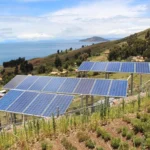
Save on Electricity in Haryana Using Net Metering: A Complete Guide
Learn how to save on electricity in Haryana with net metering. Step-by-step guide on benefits, installation, and cost savings for your home or business
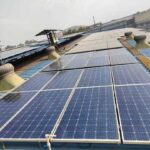
How to Calculate Savings from Rooftop Solar Solutions: A Complete Guide
Calculating savings from rooftop solar solutions is essential for planning your investment. This guide explains how to estimate cost reduction, return on investment, and long-term financial benefits for residential, commercial, and industrial solar projects.
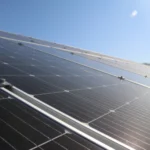
Everything You Need to Know About Solar PV Modules
Solar PV modules explained: how they generate electricity, their benefits, and why they’re key to renewable energy growth.
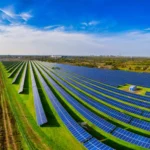
India’s Solar Capacity Growth Slows Down in Q1 2023
India’s solar capacity growth slowed in Q1 2023. Explore the factors behind the slowdown and its impact on the country’s renewable energy progress.
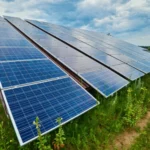
Solar Installation Cost in Haryana: Pricing, Savings & Subsidy Guide
Solar installation cost in Haryana varies by system size, components, and subsidy eligibility. This guide explains per-kW pricing, government incentives, and how much owners can save with rooftop solar in 2025, helping you choose the right system at the right budget.
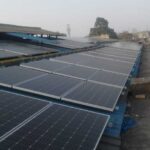
Solar Cell Technology: Monocrystalline vs Polycrystalline vs Thin-Film
Explore the different types of solar cells, including monocrystalline, polycrystalline, and thin-film, and learn their efficiency, applications, and benefits for solar energy systems.

Solar Rooftop Projects: Benefits of Intentional Islanding for Power Backup
Discover the role of intentional islanding in solar rooftop projects. Ensure continuous power supply, system safety, and reliable energy even during grid failures.
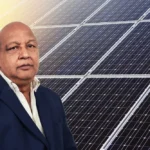
Net Metering and Its Advantages Explained: How Solar Users Save More on Energy Bills
Learn what Net Metering and its advantages mean for you—cut electricity costs, earn energy credits, and boost solar efficiency easily.